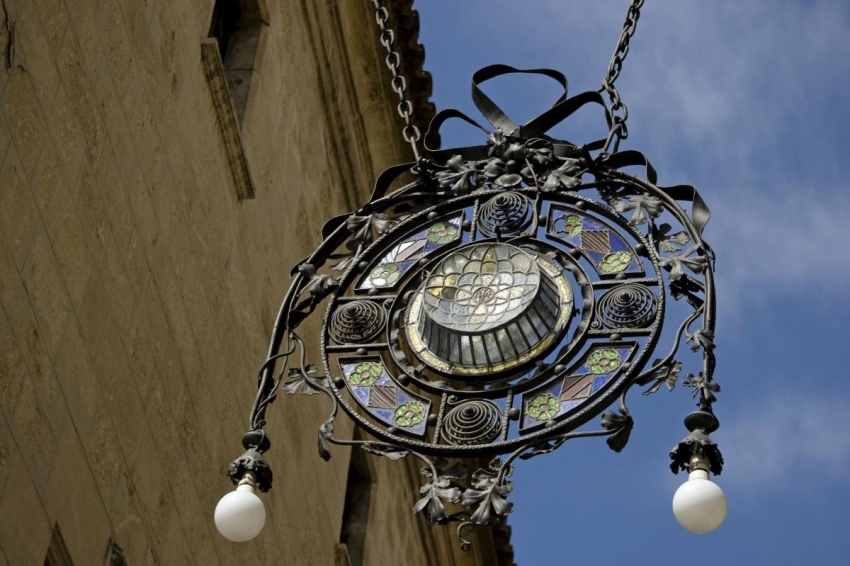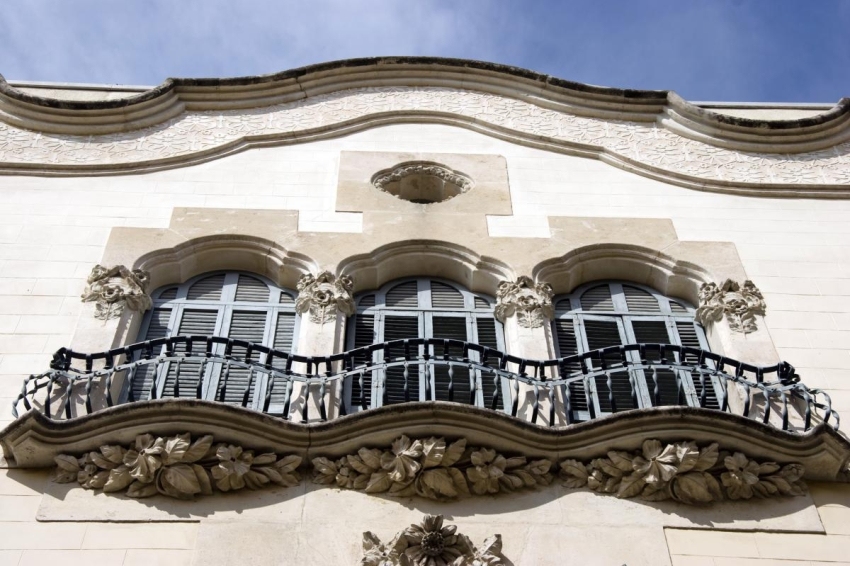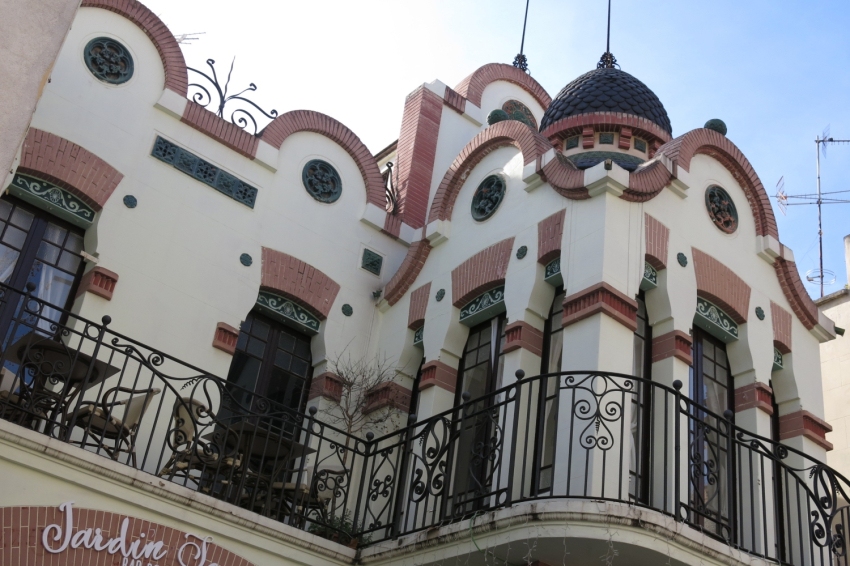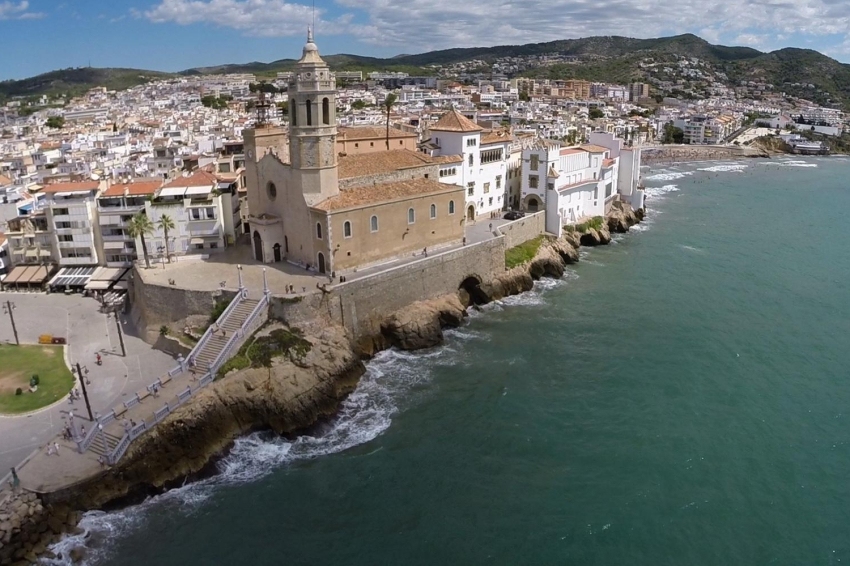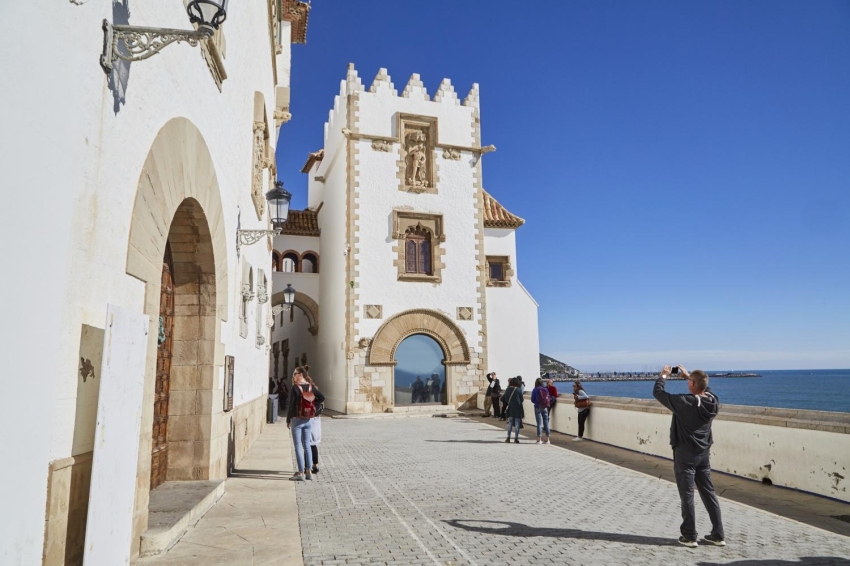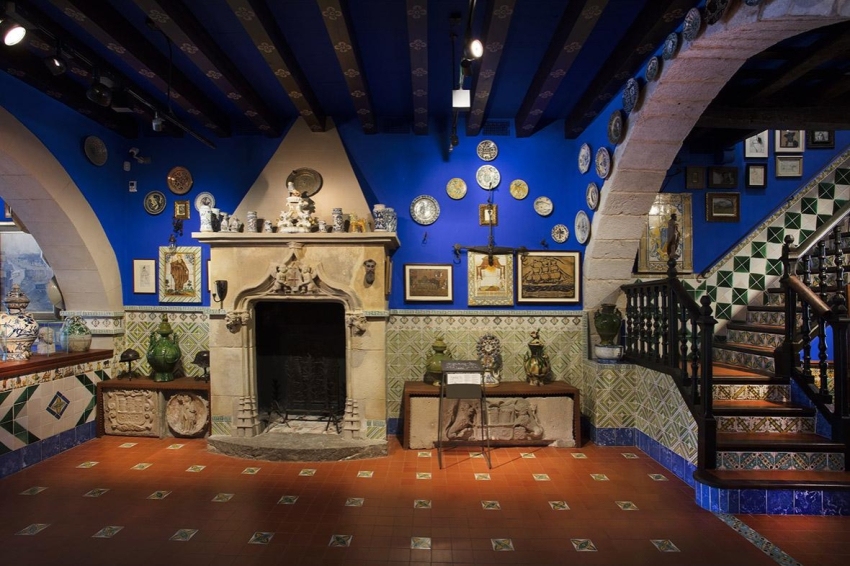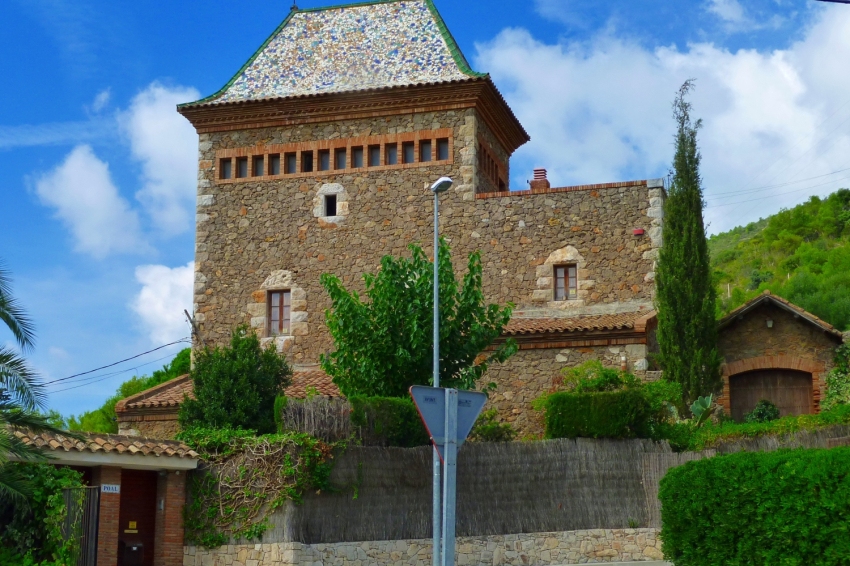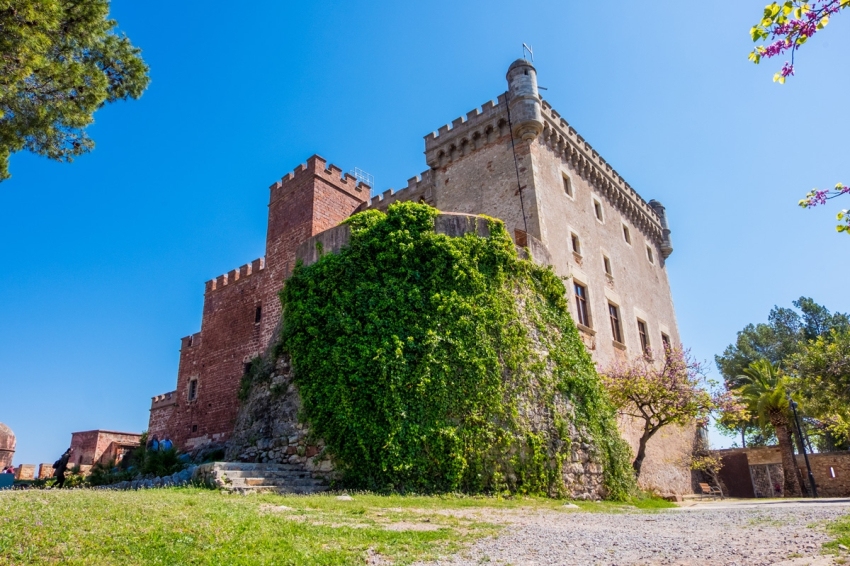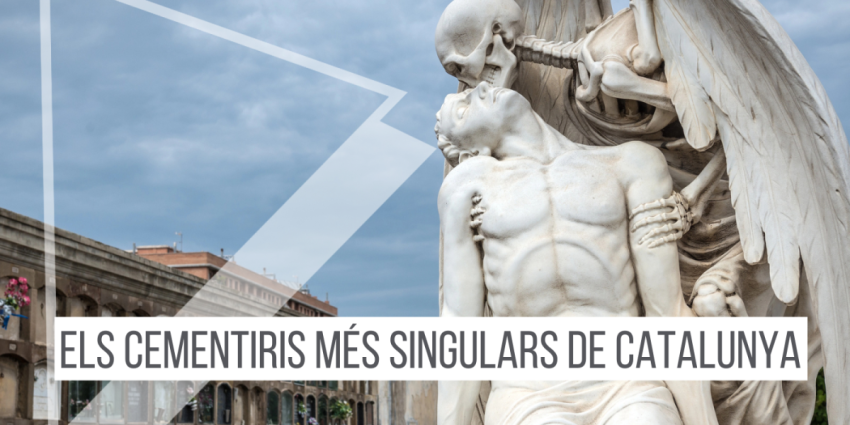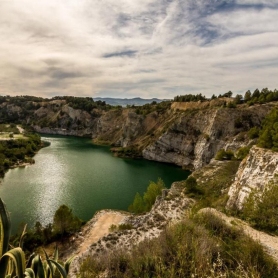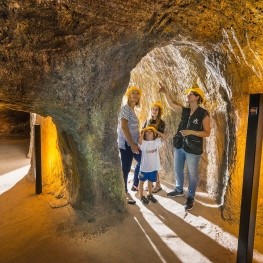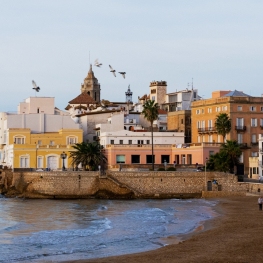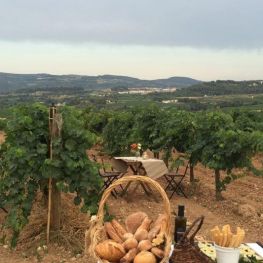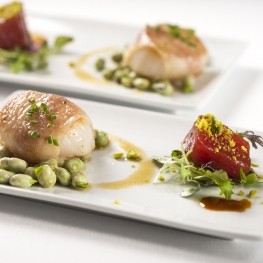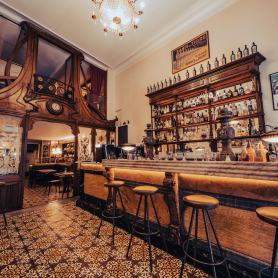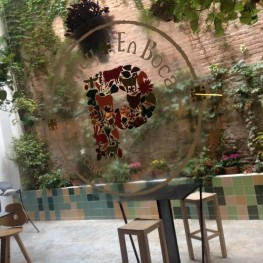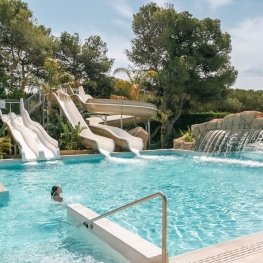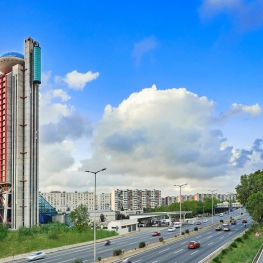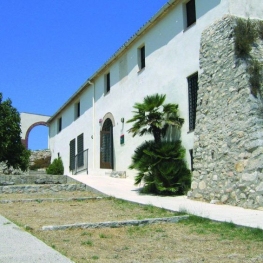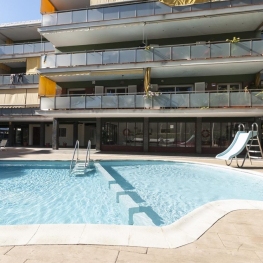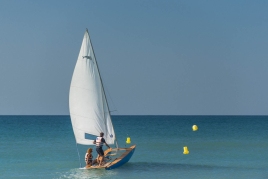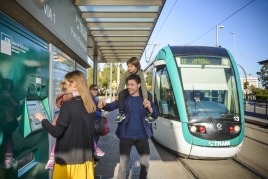Chasing modernist treasures in Alt Penedès, Garraf and Baix Llobregat by electric car
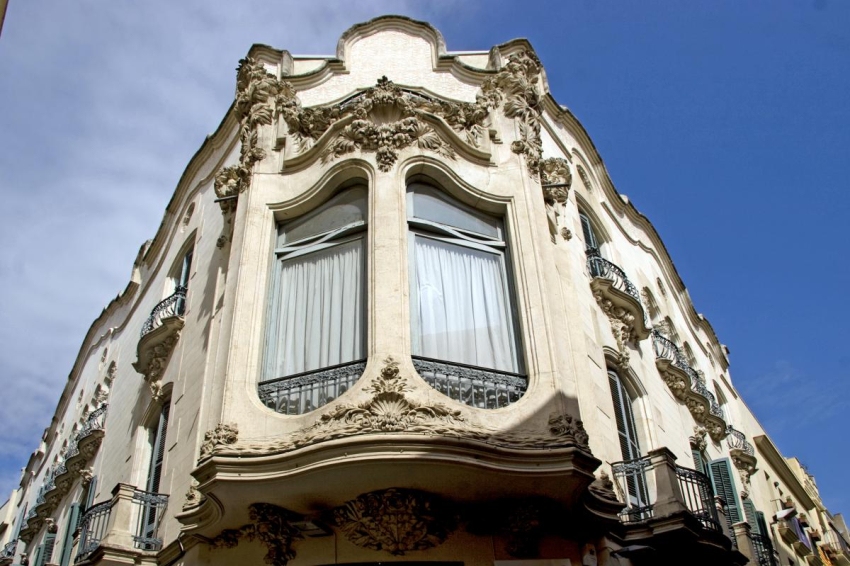
This route is designed to be done by electric vehicle, although it can be done with any other car. Along the route we will suggest municipalities that have charging points and places of interest to visit while we charge batteries.
Electric cars are a good way to decarbonise road transport These vehicles do not emit greenhouse gases and do not need fossil fuels to run, which which makes them a viable option to help reduce our CO₂ footprint.The constant improvement in the technology of these cars makes them increasingly efficient and ecological.
Consult also the recommendations when traveling by electric car.
4
Number of sections
51,3
Total kilometers
Modernism was a cultural and artistic movement that took place in Europe in the late 19th and early 20th centuries.
In Catalonia, modernism has a broader meaning, since it crossed cultural barriers and was fully introduced into Catalan society through thought, politics, architecture, painting, literature or sculpture. Modernism led the country towards modernization and sought to transform Catalan society.
Who has not heard of Antoni Gaudí, the Sagrada Família, Park Güell, Casa Batlló or the Palau de la Música Catalana? They are symbols of Catalan identity that demonstrate the importance that Catalan modernism had in society and in the history of Catalonia.
The mark left by the movement is clearly visible today, but not only in Barcelona and in the big names we have already mentioned, no, modernism left an indelible mark throughout the country, especially with regard to its architecture., inspired by nature, its processes, forms and spaces. The spectacular nature of its details makes each of its products lavish and admirable.
On this electric vehicle route through Alt Penedès, Garraf and Baix Llobregat, we will make you chase modernist gems that not everyone knows about and that are no less interesting for that reason.
Vilafranca del Penedès, Vilanova i la Geltrú, Sitges or Castelldefels hide modernist cultural treasures that we will take you to discover.
But not only that, these cities have other special tourist attractions. Museums, parks, traditions, legends, popular dishes... and its people!
Shall we start?
Vilafranca del Penedès, a modernist legacy between wines and vineyards
The starting point of your route is Vilafranca del Penedès. The capital of the Alt Penedès region is ideal to start your trip, because in its streets you can find outstanding and recognized modernist buildings such as Casa Miró or Casa Guasch.
But in addition to its relationship with modernism, Vilafranca del Penedès is also known for its cultural and gastronomic wealth.
The wine capital of Catalonia is a centuries-old town that offers you an exciting tourist experience, with a multitude of fairs and festivals, an excessive passion for castles and a natural landscape marked by its vineyards.
However, we go in parts. First, we recommend that you park your electric car in the center of Vilafranca, put on your boots and get ready to take the Vilafranca del Penedès Modernist Route in all its Chinese style.
This route will allow you to learn about the impact that modernism had on the capital of Alt Penedès. At the end of the 19th century, and after the phylloxera disaster, the economic resurgence of the territory led to the arrival of modernism, the cultural movement that was beginning to take hold in Europe.
The route itinerary will take you to around twenty places, where you can observe different modernist aspects, such as the streetlights on Santa Maria Street, around the basilica that bears its name. There are three lamps with a symmetrical composition, a radial structure, with wrought iron decorations and stained glass windows.
And since you are just around the corner, come and visit the Basilica of Santa María de Vilafranca, a building declared a Cultural Asset of National Interest, which is the first parish building in Catalonia built in the Gothic style. The building will draw your attention to its great variety of gargoyles, located in the middle of the foothills and taking the shapes of fantastic or real animals. And inside, you can also find one of the points of the modernist route, the Crypt of Santa María, a sculptural group of Carrara marble formed by a group of seven figures conceived as a narrative episode in which the moment of the burial of Christ. The modernist sculpture, made by the sculptor Josep Llimona, can be visited every Saturday from 11:00 a.m. to 1:30 p.m.
And after these modernist notes around the basilica, the route continues through different very peculiar buildings : the Rigual Artigues house, the Josep Serdà Vallès house, the Villa house, the Ramon Quer y Via house, the Josep Jané house and Alegret, the Manel M. Pecero and Tos house or the Miró house.
And here we stop to highlight the work of Santiago Güell, one of the most active architects in Penedès between 1892 and 1920. The Miró house is one of the best works of Vilafranquino modernism and from the outside you can see a large window and a balcony divided by a column with a simply spectacular floral capital. The route continues through different modernist buildings in the city, all of them with details that will not leave you indifferent. Among them, the Guasch house should also be highlighted, since it will impress you with its facade decorated with natural themes.
Soaked in Vilafranco modernism, it is time to sit down, try a good wine from this land or eat a delicious xató to recharge your batteries to visit the Vinseum, the Museum of Wine Cultures of Catalonia.
Located in Plaza Jaume I, this space will allow you to discover the culture of wine and its relationship with the city. In the museum you will find a permanent exhibition and other temporary exhibitions. They have more than 17,000 pieces related to wine that will make you understand the history, the character of the territory and its people, since ancient times marked by the cultivation of vineyards and the production of wine.
Before leaving Vilafranca, however, we do not want to fail to also recommend a route from another era, but no less interesting. If you want to discover the past of a historic Vilafranca, the Medieval Route of Vilafranca del Penedès is ideal to do so, and you will be able to see buildings such as the Royal Palace or the Palau Baltà.
![]()
Next stop
23,7 KM (Vilanova i la Geltrú)
![]()
Need to recharge?
Vilafranca del Penedès
![]() C. Camp del Cellerot S/N - Aparcament
C. Camp del Cellerot S/N - Aparcament
Los Monjes (6 km)
And meanwhile: in los Monjes, an extension of the municipality of Santa Margarida i els Monjos, you can visit the spectacular and historic Castell de Penyafort. Located at the foot of the Foix Park, this is one of the most outstanding architectural complexes in the entire Alt Penedès. Made up of the remains of an old fortified castle, a convent and a church, this was the place where Saint Ramón de Peñafort was born, canonized in 1601.
Canyelles (14 km)
And in the meantime: if you have your electric vehicle charging in Canyelles, we recommend that you take a walk through the old town of this quiet town located in a privileged environment. There you can visit the Canyelles castle, from the 14th century, or the church of Santa Magdalena, dating from the 17th century. And if you are in Canyelles... you should also know that it is known as "the town of the meteorite", since in 1861 an aerolite fell.
Vilanova i la Geltrú: modernist architecture, museums and culture galore
Leave the capital of the Alt Penedès region and head south towards the sea, along the C-15 road. After half an hour by car, you will arrive at your next destination, Vilanova i la Geltrú. The capital of Garraf is one of the most outstanding cities in terms of popular culture in all of Catalonia. The celebration of the Three Tombs, the Carnival, the Snow Festival and the many museums it has make it an essential municipality to visit.
But since what has brought you is your interest in modernism, the first place you should visit is the Renard house. This building located on Rambla Principal, 114-116, also known as Casa Magriñà, is the maximum representation of modernism in Vilanova i la Geltrú. The building has a peculiar structure, with the façade removed and a more advanced body, aligned with the street, which forms a small closed patio next to it. At the top, a spectacular dome of black glazed ceramic scales crowns a façade in which you can see millimetric decorations on doors and windows. The house was commissioned by the couple of Vilanova bakers Isidre Magriñà and Àngela Sanromà from the architect Josep Maria Miró i Guibernau, also from Vilanova. The construction of the Magriñà house dates back to 1923 and in the 1950s it began to be known as the Renard house, since a dentist with that name settled there.
But this is not the only modernist representation that you can find in the city. On the contrary, there are many more, and all of them are protected as Cultural Assets of Local Interest by the Department of Culture of the Generalitat of Catalonia. These essential places if you want to follow the modernist footprint on your visit to the city are Ca l'Artigas, Can Ricart, Florenci Sala house, the Garden City of Ribes Roges, the Chalet Doctor Ribot, Can Raventós, Can Joan Olivella, Almacén Fecsa, the Orfeó Vilanoví, the fountain in Plaza de los Carros, Can Sebastià Soler or the Chalet Miramar.
But as we have already warned you, the recommendations in the city of Vilanova i la Geltrú do not end with modernism. If you still want to know more details about this city located on the coast, the museums can be a good option. The most notable are the Catalan Railway Museum, dedicated to the custody and dissemination of railway culture. The Víctor Balaguer Library-Museum, one of the oldest and most unique museums in Catalonia, where you can find pieces belonging to the historical deposit of the National Prado Museum, with paintings by Rubens, Greco, Goya or Murillo, a 19th century Pinacoteca with works by Ramón Casas, Santiago Rusiñol, Mariano Fortuny, or a room dedicated to the Egyptian world, among others.
Before leaving Vilanova, however, you cannot miss visiting one of its most emblematic locations, the Torre Blava. This is a defensive tower built in the last third of the 19th century as a defensive element to protect the Baix-a-mar neighborhood. In 2000 Josep Guinovart converted the old tower on the promenade into a space paying homage to the Mediterranean Sea and its people. It is for this reason that it is named Torre Blava-Espai Guinovart. The circular tower is decorated with elements related to the marine universe and from the roof you can enjoy an impressive view of the promenade and the Vilanova lighthouse.
![]()
Next stop
9 KM (Sitges)
Sitges, the Catalan "Mecca of modernism"
Very close to Vilanova i la Geltrú, just fifteen minutes by car, you will find the third destination marked on this modernist route to do by electric car, the well-known city of Sitges. Also located in the Garraf region, this is a particularly touristic and cultural town. Sitges is synonymous with sun and beach, but it can also be visited outside of the summer season, as it enjoys an equally remarkable cultural, artistic and historical heritage.
And of course, a special relationship with modernism, because otherwise we would not have told you to stop here. Between 1892 and 1899, Sitges became a meeting place for modernist artists. This event occurred since the Catalan multidisciplinary artist Santiago Rusiñol settled in 1893. With Rusiñol in the city, specifically in the Cau Ferrat, Sitges was a modernist reference point and the well-known modernist festivals were frequent. These welcomed the most relevant writers, musicians, critics, sculptors and painters of the time and made the town earn the name “The Mecca of Modernism.”
And as it could not be otherwise, this reputation left a modernist mark on the streets and buildings of the town that is still visible today. By simply walking along the seafront promenade of Sitges you can enjoy the modernist footprint. With the smell of the sea and the view of the beach, you can admire the beautiful modernist houses and their meticulous details on the facades.
However, the official modernist route in Sitges begins at the train station, where you can see the houses of the so-called “Americans”, Sitgetans who returned rich from the Spanish colonies and built houses with a modernist aesthetic.
In the streets of the center of the town you can discover the modernist architecture of some of the most prominent architects of the time, such as Gaietà Buïgas, in buildings such as the Bonaventura Blay house, the Manuel Planas house or the Pere Carreras house. One of the most notable modernist houses that you cannot miss is that of Bartomeu Carbonell y Mussons. Located in a corner of the Cap de la Vila square, it is one of the most emblematic buildings in Sitges, and its tower with brittle ceramics stands out especially. And finally, we recommend a visit to the Mercat Vell in Sitges, which was the first modernist building in the town, inaugurated in 1890.
And as we have already explained to you that Santiago Rusiñol had a fundamental role in the “Mecca of Modernism”, your next stop must necessarily be the Cau Ferrat Museum. This was founded in 1893 by the same artist and houses collections of ancient art put together by the artist, as well as modern art, with works by Rusiñol himself and Picasso. In the temple of modernism in Sitges you will find painting, drawing, sculpture, forging, ceramics, glass... a veneration of the movement in all its branches and diversities.
And since not everything on your route should be modernism, to leave Rusiñol and its festivals behind, we recommend a visit to one of the most emblematic buildings of the town, the church of Sant Bartomeu and Santa Tecla. Its location, on a hill overlooking the town's beach, makes it one of the most iconic images of Sitges. The baroque style temple has an asymmetrical shape due to its numerous modifications throughout history.
![]()
Next stop
18,6 KM (Castelldefels)
Castelldefels, Gaudinian influence and Buddhist monks
The last stop on the route is Castelldefels. To get there from Sitges, take the C-32 and in just 21 minutes by electric car you will be in the middle of the town of Baix Llobregat.
And we'll let you know now. In Castelldefels you will not find the modernist richness that you have been able to admire in your previous destinations. However, it is an ideal point to end your route, since this coastal city also has a long history, for example, with the architectural remains of Ca N'Aimerich, which have a minimum chronology date of 80,000 years old. The remains of the Upper Paleolithic, the Bronze Age, Iberian, Roman and medieval have left a very rich heritage that we invite you to discover.
But yes, first, modernism. In Castelldefels we find Can Poal, the house of Count Güell, declared a Cultural Asset of Local Interest. This stone residential tower was built in 1900 and is made up of several bodies of different heights. The architect was Francesc Berenguer Mestres, a close friend of Antoni Gaudí. And that is why in Can Poal you can appreciate Gaudinian details, such as the use of materials and the free and regular volumetry. The finishes of the facades, with dark stone, the tower with a gallery, or the chimney with lavish shapes, make this building built for the account Eusebi Güell a modernist jewel.
After this lavish detail, we recommend other equally interesting and spectacular locations.
The first stop, Castelldefels Castle. This is an iconic symbol of the city and inside you can enjoy an interactive experience related to the world of piracy. Built in the 10th century, it was used for centuries to defend the city from Arab attacks and Berber pirates.
And hence the experience called Piratia, which will allow you to immerse yourself in the life of a pirate and learn about the social and political context in which this phenomenon appears. In addition, the castle, rehabilitated by Manuel Girona in 1897, has 3,500 m2 gardens with spectacular views where you can see Castelldefels, Barcelona, the sea and the Garraf Natural Park.
The latter, the Garraf Natural Park, is our last recommendation to finish the route breathing fresh air in the middle of nature. The park offers multiple options such as walking, cycling or other environmental activities.
And... how could it be otherwise, modernism!
In the heart of the Garraf Natural Park is the Palau Novella, a modernist building built in 1892, which currently houses the Sakya Tashi Ling Buddhist community.
![]()
Need to recharge?
Castelldefels
![]() Carrer Antic Camí Ral de València, 1
Carrer Antic Camí Ral de València, 1
Gavá (2.5 km away)
![]() Polígono Industrial Gavá Park, Carrer del Coneixement, 7, 13
Polígono Industrial Gavá Park, Carrer del Coneixement, 7, 13
And in the meantime: you can spend time visiting the Minas de Gavà Archaeological Park, one of the most important and unique heritage sites in our country. Beneath the city's feet, 6,000 years ago, some settlers drilled holes in the earth to create 200 hectares of mines to extract variscite, a green mineral that was used to make jewelry. These are the oldest gallery mines dedicated to variscite in Europe. Currently, you can find an interpretation center to discover this mining site firsthand.
El Prat de Llobregat (11 km away)
![]() FARMACIA, Av. de la Verge de Montserrat, 257
FARMACIA, Av. de la Verge de Montserrat, 257
![]() Av. de la Verge de Montserrat, 139Bis
Av. de la Verge de Montserrat, 139Bis
And in the meantime: if you like animals, you can pay a visit to the CRAM, the Foundation for the Conservation and Recovery of Marine Animals. This entity is dedicated to the conservation of marine biodiversity, especially for the treatment of cetaceans, turtles and seabirds. The CRAM offers guided tours to learn about its work to help the marine environment and also workshops for groups to discover, for example, how a dolphin is rescued.
In collaboration with
Etecnic is the leader in 360° installations of electric, connected and renewable mobility. It has carried out more than 1,100 projects, manages more than 7,000 electric vehicle charging points, has more than 700,000 registered users on its EVcharge APP, for which it has delivered more than 3 million hours of recharge and reduced more than 21,000 tons of CO₂.
You may also be interested in: Reduce your ecological footprint | A walk through Catalan modernism | Discover Catalonia by electric car
What to do
Bodegues Sumarroca
Subirats (a 14.4 Km)Organic Family Winery. Farmers who love the land. The involvement of the…
Where to eat
Bodega Miquel Jané
Font-rubí (a 9.7 Km)Discover the world of wine with our comprehensive viticulture and oenology courses,…
Restaurant Windsor
Barcelona (a 19.8 Km)The Windsor restaurant, located in Barcelona, is a benchmark of contemporary Catalan…
Bar Muy Buenas
Barcelona (a 19.6 Km)Few words better define Muy Buenas than "coherence." Purely modernist decor, restored…
Where to sleep
Garrofer Green Camping
Sitges (a 2.6 Km)Come to Garrofer Green Camping and enjoy a unique vacation in a…
Hotel Hyatt Regency Barcelona Tower
Barcelona (a 13.3 Km)The Hyatt Regency Barcelona Tower hotel will offer you an unforgettable experience…
Casa de colònies Can Grau, Fundesplai
Cubelles (a 8 Km)Discover Can Grau, an old wine-growing farmhouse from the 16th century. XIV…
Let's Holidays Castelldefels
Castelldefels (a 1.3 Km)We offer more than just a stay... Let's Holidays offers you a…

